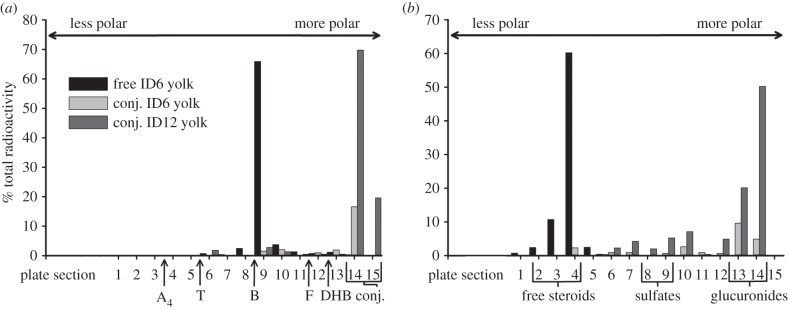Figure 2.

TLC allows for the separation of similar chemical species on a TLC plate based on differential migration rates. Plates were separated into 15 sections with plate section 1 representing the point of greatest migration (least polar) and plate section 15 the point of least migration (most polar). Samples were spotted onto section 15. Representative standardized TLC plates from ID6 and ID12 confirm the progressive metabolism of corticosterone in the yolk to a conjugated form. (a) The 95 : 5 solvent system separates free and conjugated steroids. Standards migrated according to polarity (A4, androstenedione; T, testosterone; B, corticosterone; F, cortisol; DHB, dihydrocorticosterone). (b) The 5 : 5 : 1 solvent system separates glucuronide conjugates from sulfate conjugates. Brackets indicate the migration pattern for free steroids, sulfate conjugates or glucuronide conjugates.
